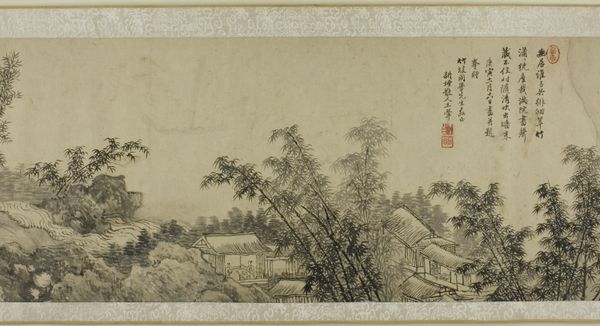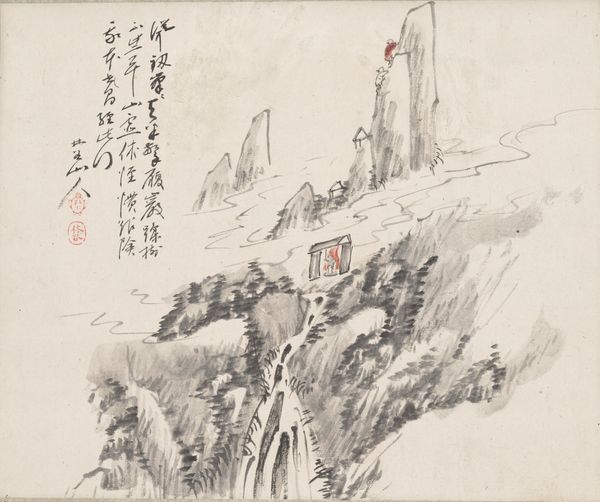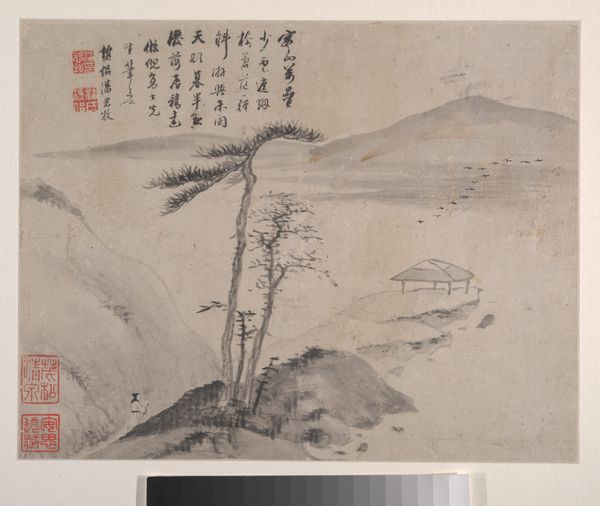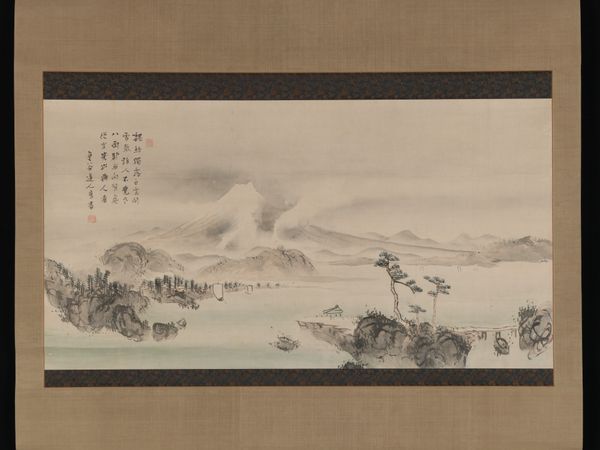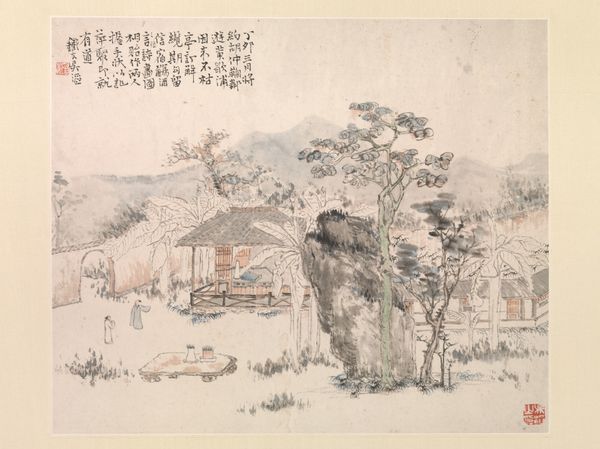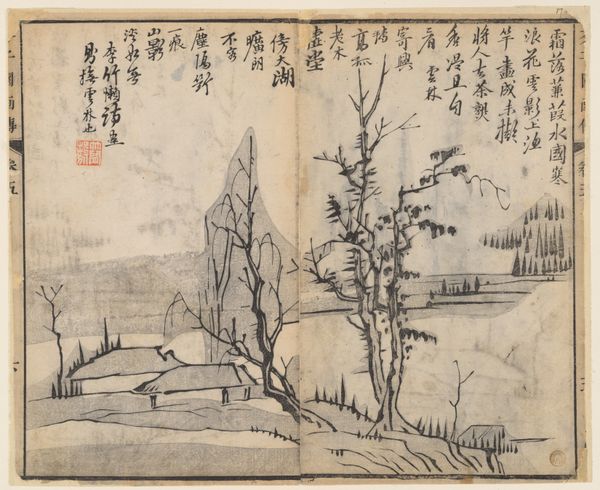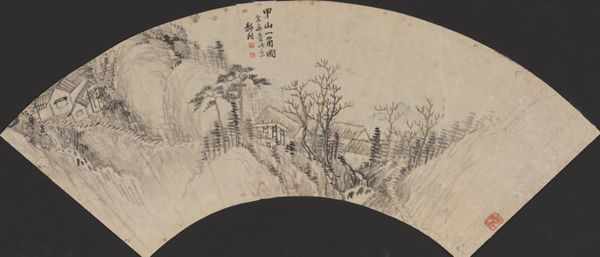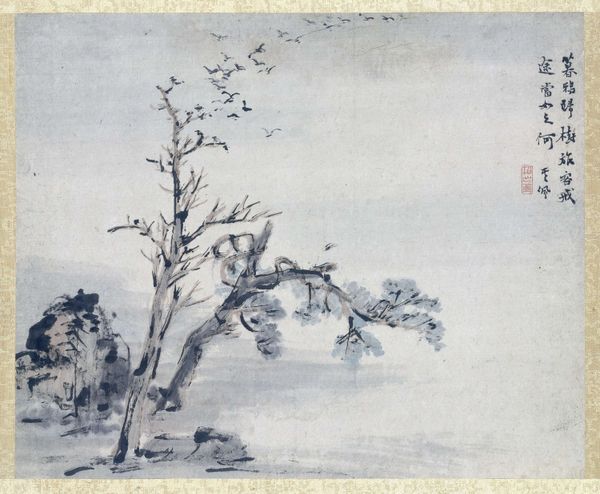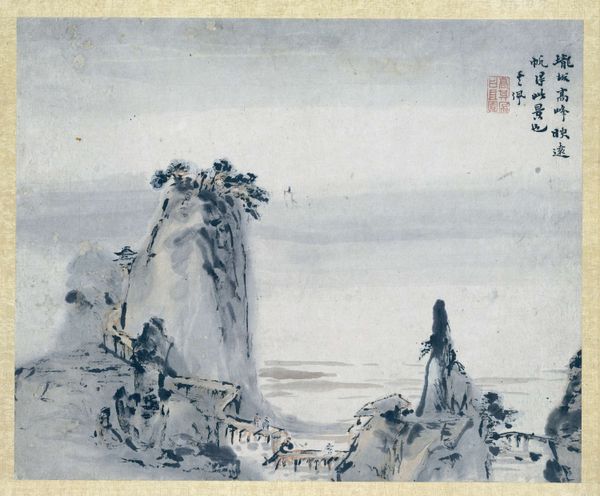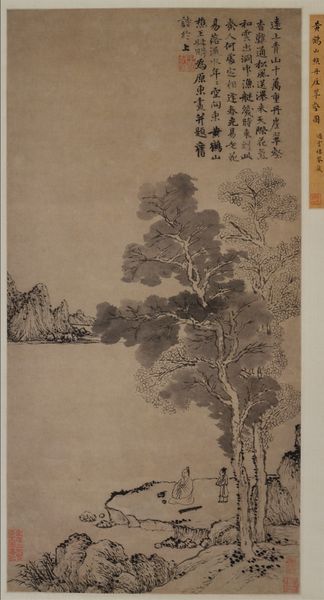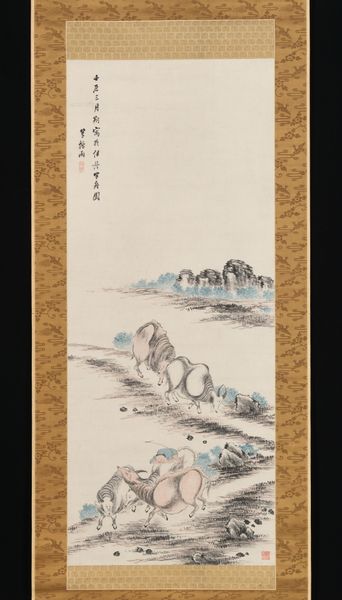
painting, watercolor, ink
#
water colours
#
painting
#
asian-art
#
landscape
#
watercolor
#
ink
#
watercolour illustration
#
mixed media
#
watercolor
#
monochrome
Dimensions: height 27.2 cm, width 33.2 cm
Copyright: Rijks Museum: Open Domain
Editor: We’re looking at “Schildering,” a landscape painting created between 1700 and 1750 by Gao Qipei. It’s made with ink and watercolor, giving it a very soft, almost ethereal quality. I’m struck by the artist’s mark-making – there’s so much variation in the brushstrokes. What do you see in this piece? Curator: For me, the critical aspect here is the production of the image itself. The ink and watercolor are not just representational tools, but materials with their own history, their own embedded cultural meanings. Think about where these materials came from – the labour involved in their creation. Editor: So, you’re saying the value lies not just in the image, but in understanding the materials themselves and how they were made? Curator: Exactly. And who had access to them? Who controlled their distribution? Were these pigments common or precious? Also, how does the artist’s unique ‘finger painting’ technique further democratize the medium? Does it blur the boundaries between “high art” and folk traditions? Editor: That's fascinating! I hadn’t thought about the socio-economic context of the materials themselves. The monochrome palette, I guess, also reflects certain material limitations or perhaps choices about resource allocation at the time? Curator: Precisely! Material scarcity often drives innovation and aesthetic choices. By considering the materials and their social lives, we gain a much deeper understanding of this landscape. It is no longer simply an image but a confluence of social, economic, and artistic decisions made visible. Editor: Wow, I will never look at watercolors the same way again! Curator: Indeed. Focusing on materiality helps us understand art not just as aesthetic objects, but as products of their time, shaped by material conditions and the hands that worked with them.
Comments
No comments
Be the first to comment and join the conversation on the ultimate creative platform.
